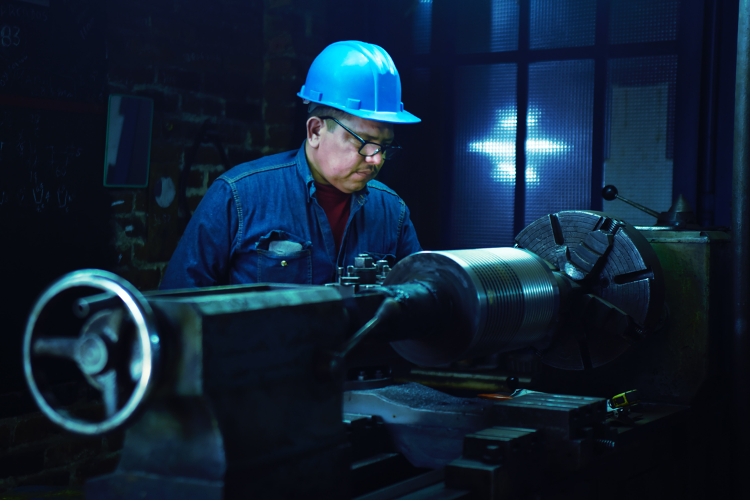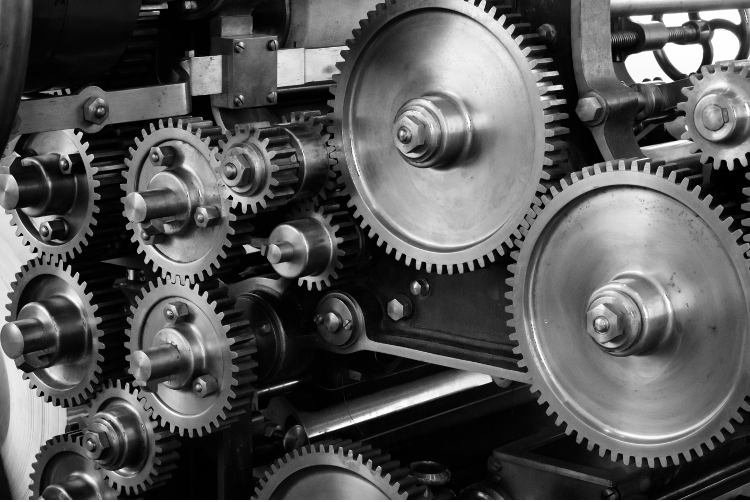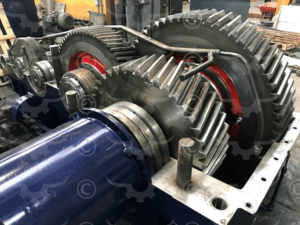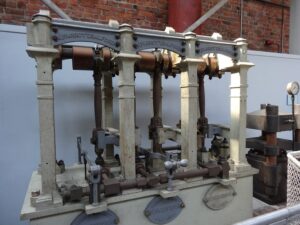Industrial gears are the components that increase torque and control the speed of various industrial machines. In order to produce gears, manufacturers perform a process known as gear cutting. However, there’s no one size fits all approach to gear cutting. Instead, each different type of gear requires different procedures and tools.
Let’s cover all the gear cutting basics, including the main processes, gear types, and gear cutting tools.
What is Gear Cutting?
The gear cutting manufacturing process begins with cutting recesses and shaping the gear’s teeth into a metal blank, requiring high precision and advanced cutting machines. Some of the most popular gear cutting processes include hobbing, milling, broaching, and grinding.
Next, let’s explore how to cut gears based on the gear cutting machines and processes.
How to Cut Gears Based on the Gear Cutting Tools and Machines
One of the most popular gear cutters is the hobbing machine. CNC machines are also popular and are widely used when high precision and efficiency are required. Other types of machines used in the gear cutting industry include:
- Grinders
- Broaches
- Milling machines
- Honing machines
- Shaping machines
- Shaving tools
5 Main Gear Cutting Processes
The five most common gear cutting processes are:
1. Hobbing
Hobs are helical cutting tools that rotate continuously while in contact with the gear blanks. This helps transfer the hob profile onto the gear and shape its cogs. This is a time-efficient gear cutting method most suitable for medium to large production runs. It’s mostly used in the production of helical and spur gears.
Advantages:
- Hobbing is a fast production method used for different batch sizes.
- Hob tools can manufacture various gears, including spur, helical, and worm gears.
Disadvantages:
- Can be used for the production of internal gears only.
- Is not suitable for producing splines.
2. Broaching
This is one of the most popular gear cutting processes, suitable for mass production of large gears. The process involves moving the broach tool through the gear piece to cut it into the desired shape and size.
Advantages:
· Can be used for both internal and external gears.
- Faster than other metal cutting processes.
- Achieves high dimensional accuracy.
Disadvantages:
- It’s a costly gear cutting method when used for customized gears.
- It’s cost-efficient only when used in mass production runs

3. Milling
The milling machine is a rotating cutter that removes material from the gear blank and shapes the final gear teeth. This method is slower than most other methods because the machine shapes the gear tooth-by-tooth. Once a gear tooth is finalized and the milling machine is removed, the gear blank is rotated to the next position,and the cutter shapes the next tooth. The process is repeated until all gear teeth are shaped.
Advantages:
- Milling is a highly-precise cutting process.
- It is a good option if you’re producing customized gears.
Disadvantages:
- Consumes a lot of energy.
- Requires skillful professionals to perform the process correctly.
4. Shaping
This is the oldest gear cutting method. The gears can be cut by placing them in a rack or pinion cutter, which generates the tooth profile.
Advantages:
- Shaping cutters can be used to produce a wide range of gear types.
- It’s a good option for low to medium-sized batches.
Disadvantages:
- It’s not an efficient gear cutting method.
- It’s less precise than other methods.
5. Grinding
Grinding is not a gear cutting operation, but it’s a fundamental step in finishing the gear. It’s usually performed right after heat treatment and involves polishing the gear by rubbing a rough surface against it. This ensures the precise gear tooth replication on the gear blank.
Advantages:
- Grinding offers high meshing effectiveness.
- It makes more cuts than most other methods and can easily handle heavy loads.
Disadvantages:
- Grinding is a time-consuming process
- The cost of the process is quite high.
5 Main Gear Types
Leading industrial gearbox manufacturers like Falk, Flender, and Western Gearbox produce a wide range of gear components, including some of the most common types of gears such as:
- Bevel gear
- Worm gear
- Helical gear
- Spur gear
- Herringbone gear

Gears can be made of metal, plastic, wood, iron, or steel based on the required specs and whether they need to take on low or high workload, speed, torque, and vibration.
Take Advantage of Our Expert Gear Cutting and Industrial Gearbox Services
Gear cutting can drain a significant amount of your resources, especially if you don’t plan on producing large gear batches on a regular basis.
In this case, you might be better off using the services of a gear cutting shop. At Houston Pump and Gear, we offer professional gear cutting in Houston, and we service clients from all over the US, Mexico, and Canada. We also offer a wide range of gearbox exchange, overhaul, and repair services.
Have any questions? Just give us a call at (832) 603-9663.




